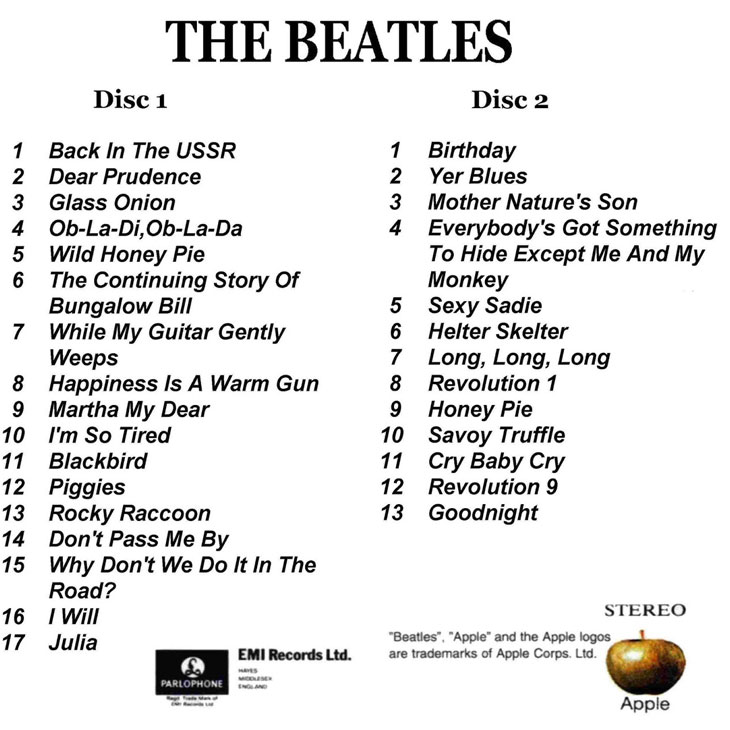

The genesis of the album, however, had creatively and emotionally exhausted them and within less than a year of its release, the four of them would never again be together in the same place. The scale and scope of the music contained within was another extraordinary step in the career of The Beatles. Just over six months later on November 22nd 1968, thirty sprawling, complex and strikingly-interlinked songs – taking up four sides of vinyl – were released to the world, all encased within a pristine white sheen of cardboard bearing only the embossed name of its creators.

Against the backdrop of these events – at George Harrison’s Kinfauns residence in Escher, Surrey in May of 1968 – The Beatles regrouped to begin recording the demos for what would become their eponymous ninth album.

The Sixties were facing their hour of introspection.Īs it transpired, so too were its biggest stars.
The white album tv#
With Vietnam escalating, Paris in flames, and the Black Power movement gaining support alongside shocking footage of assassinations, rioting, and technicolour war across the TV networks, the blissful ideals of the Hippy movement had been rocked: the Summer of Love was over. However, alongside this, the previous thousand days had redefined so much more on a global, geopolitical level. In the space of just over one thousand days, they had defined the cultural heritage of their generation. In the space of three years, The Beatles had progressed from a superbly adept pop band ( Rubber Soul), to an experimentally-geared creative hive ( Revolver) and then to utterly redefining the role of the studio and contemporary culture for all time in forty extraordinary minutes ( Sgt Pepper’s Lonely Hearts Club Band). As The Beatles returned from their meditative sojourn in India during the Spring of 1968 (George found enlightenment, Ringo missed his food), it must have been difficult for them to contemplate the swirling musical and political changes that were sweeping the Western world.


 0 kommentar(er)
0 kommentar(er)
